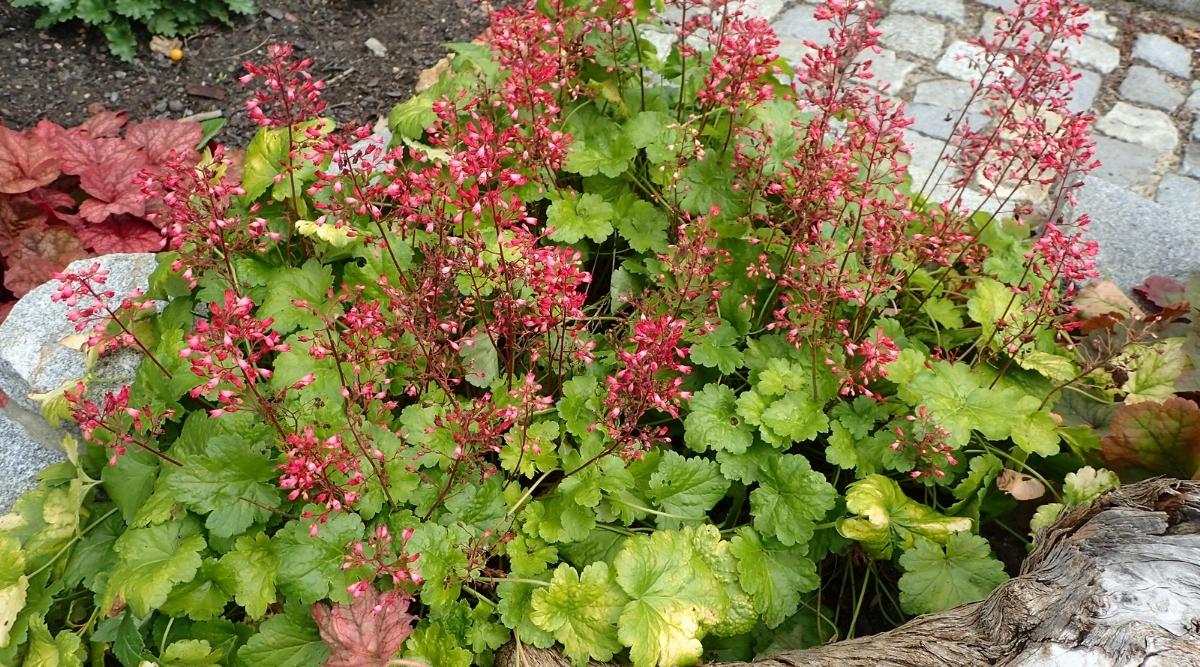nbaschedule2012now.net – Coral Bells (Heuchera) is a beloved perennial known for its vibrant foliage, delicate flowers, and low-maintenance care requirements. Native to North America, this charming plant has become a popular choice in gardens due to its versatility, striking colors, and ability to thrive in a variety of conditions. Whether used as a ground cover, border plant, or in containers, Coral Bells are sure to enhance any landscape.
Description and Features
Coral Bells are most recognized for their vibrant, ornamental leaves, which come in a variety of colors, including shades of red, purple, silver, and green. The leaves are typically heart-shaped or lobed, adding texture and interest to the garden even when the plant is not in bloom. The foliage can often change color throughout the seasons, becoming more intense in the cooler months.
During late spring to early summer, Coral Bells produce airy, bell-shaped flowers that emerge on long, slender stems above the foliage. These small flowers typically range in color from white to pink, red, or coral, and are borne in loose, elegant clusters. Though the flowers are not as prominent as the foliage, they add a delicate touch and attract pollinators such as bees and butterflies.
Habitat and Distribution
Coral Bells are native to North America, with species found growing in woodlands, meadows, and rocky slopes across the continent. These plants are well-suited to temperate climates and can be found in a range of habitats, from shaded forest floors to sunlit meadows.
In cultivated gardens, Coral Bells thrive in well-drained soil and benefit from partial to full shade, making them an ideal choice for areas with limited sunlight. While they can tolerate full sun in cooler climates, they generally prefer more shaded areas, particularly in hotter regions where protection from the afternoon sun is needed.
Ecological Importance
Coral Bells play an important role in supporting local pollinators. Their small, tubular flowers are particularly attractive to bees, butterflies, and hummingbirds, providing a valuable source of nectar. This makes Coral Bells an excellent choice for pollinator-friendly gardens, helping to support the health of local ecosystems.
Furthermore, Coral Bells’ low-growing nature makes them an excellent ground cover, helping to suppress weeds and maintain soil moisture. Their ability to thrive in shady areas also provides a solution for gardeners looking to fill in difficult-to-plant spots beneath trees or along shaded paths.
Cultivation and Care
Coral Bells are relatively easy to grow, making them an excellent choice for both beginner and experienced gardeners. These plants thrive in well-drained, fertile soil, and they prefer moist conditions but do not tolerate standing water. It’s important to ensure good drainage, as Coral Bells are susceptible to root rot in overly wet soil.
To keep Coral Bells looking their best, it is important to remove dead or damaged foliage in early spring to make way for fresh growth. Although Coral Bells are fairly drought-tolerant once established, they benefit from regular watering, particularly during hot, dry periods. If grown in sunnier areas, extra attention to watering may be required to prevent the leaves from scorching.
Coral Bells are typically propagated through division or from seed, and they can be divided every 2 to 3 years to maintain plant vigor. They are also relatively pest-resistant, though they may occasionally be susceptible to aphids or slugs, especially during wet conditions.
Symbolism and Cultural Significance
While Coral Bells do not have widespread symbolic meanings like some other flowers, they are often appreciated for their beauty, versatility, and hardiness. In the language of flowers, they can symbolize resilience, elegance, and charm—qualities reflected in their ability to thrive in various garden environments.
Additionally, Coral Bells are often used in garden design for their contrasting colors and textures, providing visual interest and harmony when paired with other plants. Their evergreen foliage also ensures that they provide year-round beauty in the garden.
Conclusion
Coral Bells are a versatile and stunning addition to any garden. With their colorful foliage, delicate flowers, and low-maintenance care, these perennial plants thrive in a range of environments and offer beauty throughout the year. Whether used for their ornamental qualities, their role in attracting pollinators, or their ability to add texture to shaded areas, Coral Bells continue to be a favorite among gardeners looking for a resilient and elegant plant.
